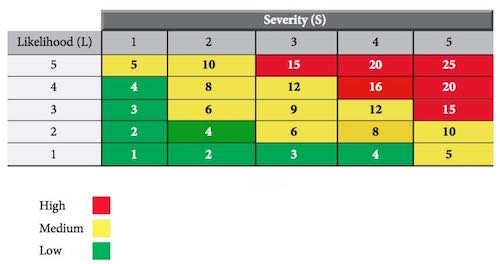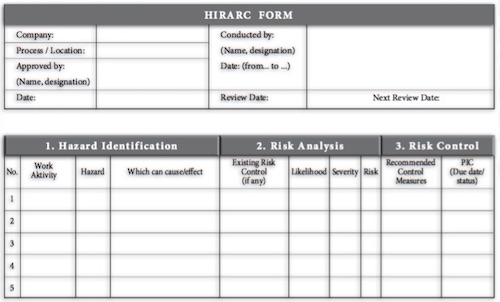Before actually beginning the job hazard analysis, take a look at the general conditions under which the job is performed and develop a checklist. Below are some sample questions you might ask :
- Are there materials on the floor that could trip a worker?
- Is lighting adequate?
- Are there any live electrical hazards at the jobsite?
- Are there any chemical, physical, biological, or radiation hazards associated with the job or likely to develop?
- Are tools - including hand tools, machines, and equipment - in need of repair?
- Is there excessive noise in the work area, hindering worker communication or causing hearing loss?
- Are job procedures known and are they followed or modified?
- Are emergency exits clearly marked?
- Are trucks or motorized vehicles properly equipped with brakes, overhead guards, backup signals, horns, steering gear, and identification, as necessary?
- Are all employees operating vehicles and equipment properly trained and authorized?
- Are employees wearing proper personal protective equipment for the jobs they are performing?
- Have any employees complained of headaches, breathing problems, dizziness, or strong odors?
- Is ventilation adequate, especially in con ned or enclosed spaces?
- Have tests been made for oxygen de ciency and toxic fumes in con ned spaces before entry?
- Are work stations and tools designed to prevent back and wrist injuries?
- Are employees trained in the event of a re, explosion, or toxic gas release?
Naturally this list is by no means complete as each worksite has its own requirements and environmental conditions. You should add your own questions to the list. Photographs, if appropriate, may be used in creating a more detailed analysis of the work environment.











